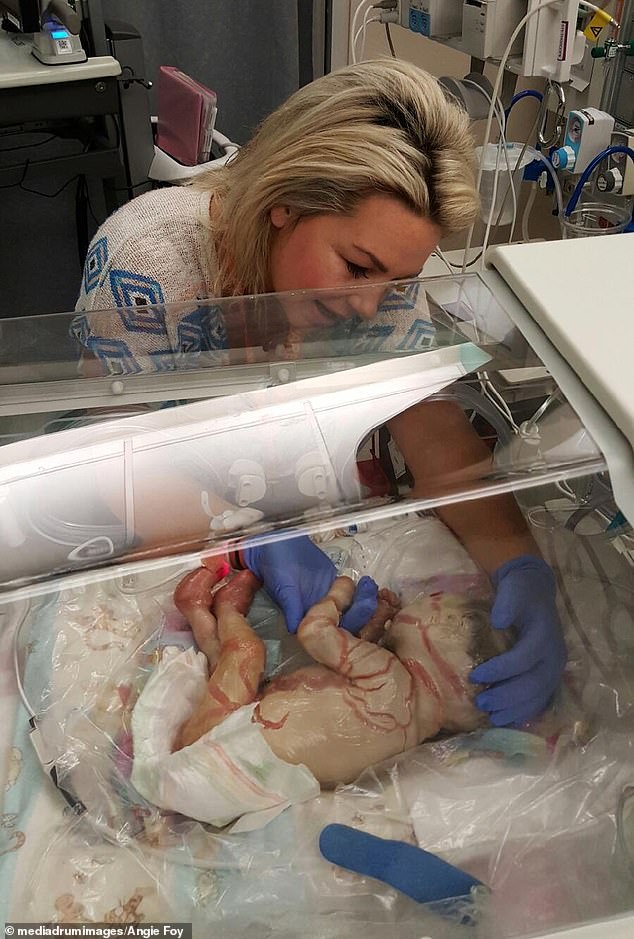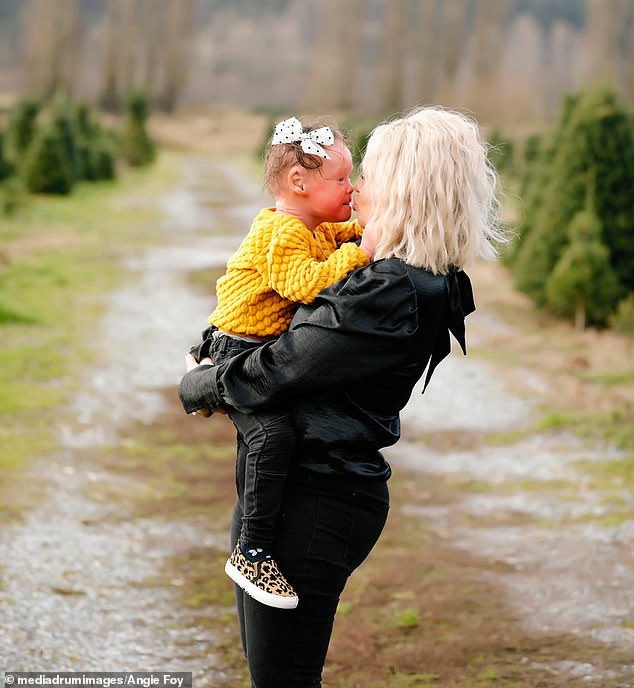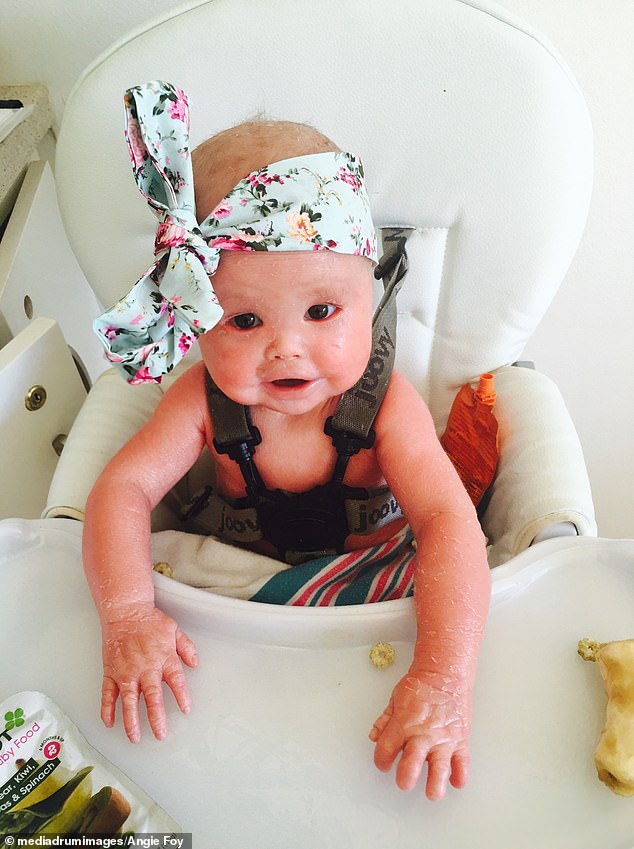This 8-year-old girl is only the 20th person in the US and 100th in the WORLD with rare skin disease that requires her to take 3 one-hour baths a day
An eight-year-old girl is one of the few people in the world with a genetic condition so rare that fewer than seven Americans are born with it each year.
Harper Foy of Edmonds, Washington was diagnosed at birth with Harlequin Ichthyosis (HI), one of the rarest genetic skin conditions that causes her skin to shed every four hours.
Harper is believed to be just the twentieth person in the US and the hundredth in the world to live with her condition, which the skin grows 10 times faster than normal.
Doctors thought it would kill her, but she has defied the odds and now models professionally for children’s clothing brands such as Little Stocking Company and Costco.
Harper’s mother described her daughter as “the most confident, feisty, outgoing and high-spirited party girl.”

Babies with Harlequin Ichthyosis are born prematurely with very hard, thick skin covering most of their body. In Harper’s case, her skin formed large, diamond-shaped plates separated by deep cracks
However, she needs to keep her skin constantly moisturized uses a 14 oz jar of Aquaphor, a petroleum jelly product that heals and moisturizes chapped skin, every two days just to keep her skin hydrated, which costs her family almost $60 a week.
When Harper was born, her doctors had never seen her condition before and warned her parents that their daughter was unlikely to survive.
In children with Harlequin Ichthyosis, thick cuticles develop in the skin uterus, the cessation of blood circulation in the feet and hands at birth.
When Harper was born, she was rushed to the intensive care unit, and although surgeons were able to remove the plaques, she lost the tips of four of her fingers.
After a month of battling an infection in the hospital, Harper overcame the odds and was allowed home. Most babies born with the condition do not survive beyond the first week of life.
For two years she had difficulty eating and eating and had to receive nutrients through a feeding tube.
Now she also needs three one-hour showers or baths daily to keep her comfortable.
Babies with Harlequin Ichthyosis are born prematurely with very hard, thick skin covering most of their body.
In Harper’s case, her skin formed large, diamond-shaped plates separated by deep cracks.
After the newborn period, the hard skin plates are shed and the skin develops widespread flaking and redness.
These skin abnormalities affected the shape of her nose, eyelids, mouth and ears, and limited the movement of her arms and legs.
Restricted movement of the chest due to tight skin can sometimes lead to breathing difficulties and respiratory failure in babies with the condition.
Normally, the skin forms a protective barrier between the body and the environment.
However, the skin abnormalities associated with Harlequin Ichthyosis disrupt this barrier, making it difficult for affected babies to control water loss and regulate their body temperature.

Mrs Foy, 47, a property agent, said: ‘Every time we go out we get a lot of stares. Not a day goes by that people don’t stare at her. It can be very annoying’

Harper has had a feeding tube for two years and now needs three one-hour showers or baths daily to keep her comfortable
Babies with HI often experience excessive fluid loss, dehydration and develop life-threatening infections in the first few weeks of life.
For Harper, she is always cold and constantly fighting infections.
The Foy family was shocked when they received the little girl’s diagnosis. Not only did no one in their family have the condition, they had never heard of it.
HI is caused by mutations in a certain gene responsible for making a protein necessary for the normal development of skin cells. When the gene mutates, the skin barrier is disrupted.
It is inherited in an autosomal recessive pattern, which occurs when an individual inherits an abnormal gene from each parent – meaning that both Harper’s mother and father had the gene and passed it on to her.
Although Harper’s mother, Angie Foy, says she is a happy child, she still faces discrimination because of her condition.
Mrs Foy, 47, a property agent, said: ‘Every time we go out we get a lot of stares. Not a day goes by that people don’t stare at her. It can be very disturbing.
“One mother told her children to stay away from Harper because she thought Harper was contagious and sick.”
Ms Foy added that people often think her daughter got sunburned and forgot to put sunscreen on her.
Despite the struggle of living with this condition, Harper has never let it hold her back. She is a confident young girl and has been modeling since she was 4, her mother said.
“We are Harper’s biggest supporters and we tell her there is nothing she can’t do. We encourage positive self-talk with her every day.
“Three and a half years ago I submitted a photo of Harper to a local modeling agency with a short biography about Harper, and they were intrigued and asked us to come in and meet her,” Ms. Foy said.
“We walked in and they fell in love with her cheerful, infectious and happy self, and they signed her that day. The rest is history.
‘She was born to be in front of the camera. She is truly a natural talent and loves having her picture taken.
‘You can see it in her portfolio photos. And she has also gained so much self-confidence,” her mother said.
Mrs Foy described her daughter as ‘the most confident, feisty, outgoing and full of life party girl.’
She added: “Harper’s most unique characteristic is her personality and her compassion for others. She has the biggest heart.
‘Appearance does not determine their value as a human being. We all look different, and that’s okay.’
